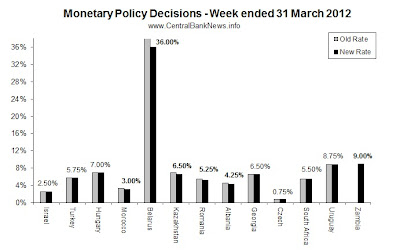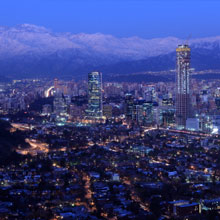By MoneyMorning.com.au
For years, the United States has feared an energy crisis.
That one day the U.S. would have to import nearly all its oil and gas from overseas.
If there was a disruption to the supply lines, it would lead to rising fuel prices and severe shortages. That would mean higher costs for businesses. And higher prices for consumers.
All of which could push the world’s biggest economy into recession. And cause mass civil unrest.
It would be the 1970s “oil shock” all over again. But this time… it would be much worse…
Energy Crisis Over?
But, despite those fears, the U.S. energy crisis never really happened.
Why?
Well, it may seem counter-intuitive, but it’s thanks to $100 oil.
That’s not something you’ll read anywhere in the mainstream press. But it’s true.
When oil prices were low, it was too expensive for explorers and producers to reach hard-to-get oil reserves. And the harder it is to get, the tighter the supply. And the more the West had to rely on the Middle East.
That was just fine for the Middle East oil cartel. It had plenty of easy-to-get oil.
And when oil prices soared from 2001 onwards, it seemed as though it would provide riches to the Middle East, while dooming the West (especially America) to economic depression.
In fact, some have argued the crash in 2008 was partly due to high energy costs. That may be true.
But sometimes it’s hard to look past the short term and focus on the long term. Short term, a high oil price was great for Saudi Arabia, Iran and the rest of OPEC. But it wasn’t great for the U.S. and the West.
But in the long term, the opposite will be true.
In fact, we believe the high oil price of the past 10 years has actually secured America’s energy future. And soon, it could do the same for the rest of the Western world too…
The Energy Future for Investors
You see, while high oil prices have caused short-term pain, long term it means hard-to-get energy reserves became viable.
This is where entrepreneurial and risk-hungry energy companies have started to exploit the high oil price.
In the U.S., this has mostly happened with the exploration of shale oil and shale gas reserves. 20 or 30 years ago, these resources were too expensive to consider.
That’s changed. To the extent that according to global energy giant, BP, the U.S. is set to be energy self-sufficient by 2030. And soon after it will become a net energy exporter.
That’s an amazing shift from where the U.S. was just a few years ago.
And so now, the race is on to sideline Middle Eastern influence in energy markets.
You see, while a high oil price is good news for big producers in the Middle East, it’s also bad news. Simply because a high oil price makes other projects viable.
And that means more price and supply competition. It explains why Saudi Arabian oil minister, Ali al-Naimi is so keen to make sure the market still knows who’s in charge.
As Bloomberg News reports:
“Saudi Arabia said it could potentially raise output capacity to 15 million barrels a day, from 12.5 million barrels a day, using new oil fields if needed.”
That’s all talk.
Saudi Arabia doesn’t really want to knock down the oil price. It just wants to make investors, explorers and producers think it can knock down the price.
Because while lower oil prices are actually better for the Middle East in the long term (because it makes competing oil fields less viable), in the short term, Middle East dictators like high oil prices because they can buy more trinkets (football teams, London and New York property, and so on).
And because they’re afraid of what could happen if prices fall and they can no longer afford the handouts they’ve promised their oppressed citizens.
Under-Explored East Africa
The effect is that explorers are pushing the boundaries of the exploration frontier. For years, when oil was just USD$20 per barrel, certain areas of the world were no-go zones. They were politically unstable…geologically inaccessible… or just plain not worth the risk.
But with oil at USD$100 per barrel, the reward has started to offset the risk. Of course, it’s still risky. Very risky.
But the risk is now worth taking. Norwegian oil company, Statoil is exploring in an almost untouched area – the east coast of Africa. To highlight just how risky it is, Statoil has hired armed security guards to patrol its offshore assets to protect them from pirate attack!
But even machine-gun toting pirates can’t keep the explorers away.
And why would they? The east African coastline is almost completely unexplored when it comes to oil and gas.
That’s highlighted by these amazing numbers from U.K-based explorer and producer, Afren plc…
Source: Afren plc
For every 70 wells drilled in North, West and Central Africa, only one well has been drilled in East Africa.
Oil company, Africa Oil, makes a similar comparison. This time comparing the triangle of Kenya, Somalia and Ethiopia with the North Sea and the Suez Basin:
Source: Africa Oil Corp
Fewer than 200 wells drilled, compared to 7,706 for the North Sea and Suez Basin. That’s just 2.5% the number of the wells drilled, in an area 10-times larger!
Despite the risks (including from pirates), exploring this untouched frontier is already starting to pay off. As the Financial Times recently reported:
“Statoil set the oil industry abuzz late last month when it announced it had found large volumes of natural gas off the coast of Tanzania, confirming east Africa’s reputation as one of the energy world’s most promising new frontiers.”
The Biggest Energy Shake-Up in 20 Years
The idea of frontier energy plays (whether it’s a geographical or technological frontier) is something we’ve focused on in Australian Small-Cap Investigator.
The idea that explorers and producers are doing things and going places that could shake up the entire world energy market.
This is attractive, because as a speculative investor, you want to be at the turning point of change. Because if you can identify a change in direction early – or as it happens – that’s where you can potentially make your biggest returns.
And as we see it, one of the biggest changes in direction is happening in energy markets right now. If you’re quick, there’s still time to get involved.
How?
We’re preparing a special report on the subject. So look out for it over the next couple of weeks.
Cheers.
Kris.
Related Articles
The Conference of the Year “After America” DVD
Oil Getting Ready For Its Next Rally
Shale Gas: One American Analyst’s Winning Aussie Investment Idea

How You Can Profit from an Unexpected End to the Energy Crisis




